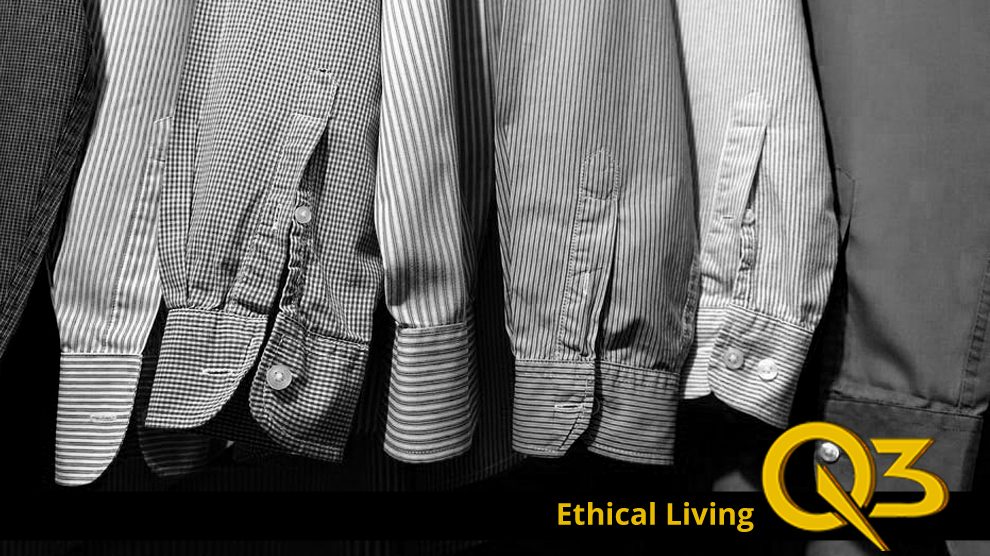by Amberley Steenhagen
We live in a time where style defines us more than ever before and clothing is accessible at the click of a button. Gone are the days of the two seasons of fashion, now new items are pumped out weekly and as a collective, we buy into it, with the average person in the UK spending ┬ú1042 on clothes in a year, according to a 2017 Telegraph article. This is known as fast fashion; clothing that is affordable and easy to buy and quickly goes out of style. And shouldnÔÇÖt this be a great thing? At the click of a button, I could have a ┬ú10 dress from Misguided or Pretty Little Thing delivered to my door tomorrow morning, without even leaving my house. However, behind the facade of an industry of individual expression and creativity, this endless cycle of consumerism is having a detrimental effect on the environment and the workers.
Most of us now know that the clothes we buy from high-street shops are made by grossly unpaid workers in third-world countries. Yet the extent of this exploitation is so easily forgotten or just attributed to the cheapest of chains, such as Primark. Globalisation has meant that companies can easily move their manufacturing overseas to countries such as India or Indonesia where there are little to no regulations on minimum wages. This allows them to produce clothing cheaply and maximise profit, meaning it is hard to find an affordable clothing brand where workers (many of them children) are paid more than the equivalent a few dollars for a full dayÔÇÖs work, including beloved brands like H&M or Topshop. However, just this alone can almost be forgotten in the cycle of keeping up with the ever-changing fashion industry. A top on sale for ┬ú4 can make you turn a blind eye to the dozens of underpaid hands it has passed through before you take it off the rail.
It is important now more than ever that we keep ourselves informed about what we are truly paying into; it is more than just funding the exploitation of the poor. Did you know that in 2015 seventy-two people were killed in a fire at a footwear factory in the Philippines? Or that over a hundred were killed in a sweatshop fire in Bangladesh in 2012? Or, horrifically, that over one thousand people lost their lives and a further thousand were injured when a Bangladeshi factory collapsed in 2013? In an interview with the BBC following the collapse, a young man described how he had to amputate limbs at the scene in order to rescue people from the rubble. This is the horrific and graphic truth behind the high-street labels, companies are able to get away with factory workers producing their clothing in highly unsafe working conditions. There are hardly any safety regulations and any that exist are not enforced, therefore people are losing their lives; we as consumers are not the people truly paying the price for an article of clothing.
And it doesnÔÇÖt end there ÔÇô the clothing industry is having large impacts on environmental resources. In 2015, The Times suggested that it takes 20,000 litres of water to produce a t-shirt and pair of jeans. The figure is staggering considering the sheer amount of production that happens worldwide and the growing appetite for more clothing. We have all been told to do our part in saving water resources, take shorter showers and turn the tap off whilst you brush your teeth. Yet simply by buying less clothing from the high street, we can reduce our contribution to the diminishing water resources dramatically. And a further environmental impact is the growing amount of waste produced by the continuing changing fashion. It has been estimated that over 13 million tons of clothing end up in landfills as things go out of style or it is simply easier to re-purchase an item than fix it. We are becoming more aware globally of the importance of recycling plastics and food waste, so why are textiles not so hot on our radar?
We shouldnÔÇÖt feel guilty for our love of clothing and new items; itÔÇÖs about becoming more conscious and aware and making changes to our buying habits. Charity shops arenÔÇÖt just full of granny-style clothing anymore, if you look there are hundreds of fashionable and unique items. It is worth taking more time to shop and search for second-hand bargains rather than giving into the ease of online shopping and next day delivery. Even vintage shops, although more expensive, carry styles which are second-hand and worth the price tag. The Cardiff University StudentsÔÇÖ Union is hosting a vintage clothing sale on the 12th of February, you can check it out here, and by keeping an eye on Facebook events there are plenty more sales in the upcoming months across Cardiff. Another brilliant way of switching up your wardrobe is clothes swaps; going to an event where you can trade unwanted items of clothing with others. This is also great for combating the vast amount of textile waste that ends up in landfills yearly ÔÇô a win/win situation. ┬áEven simply by fixing broken items rather than replacing, you can make a difference. Although we live in a world where we can have everything at the click of a button, it is up to us as individuals to make our own differences and stay informed of the true cost of our spending habits.











